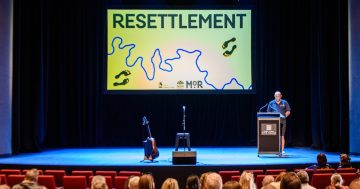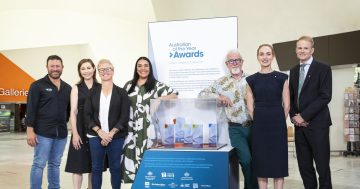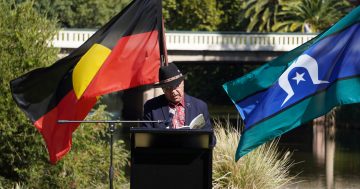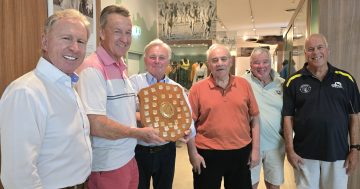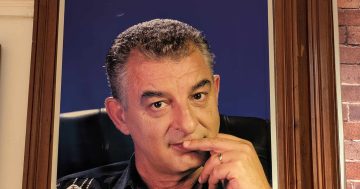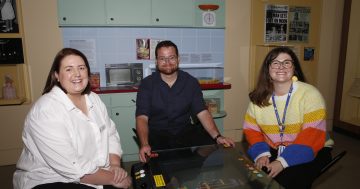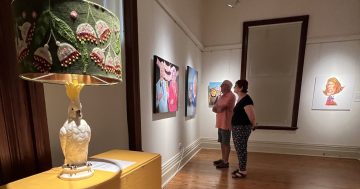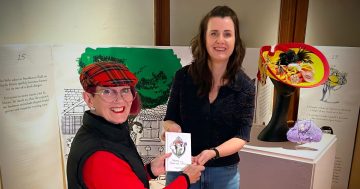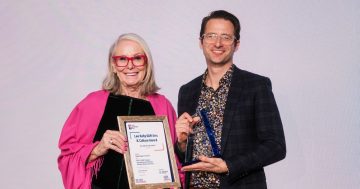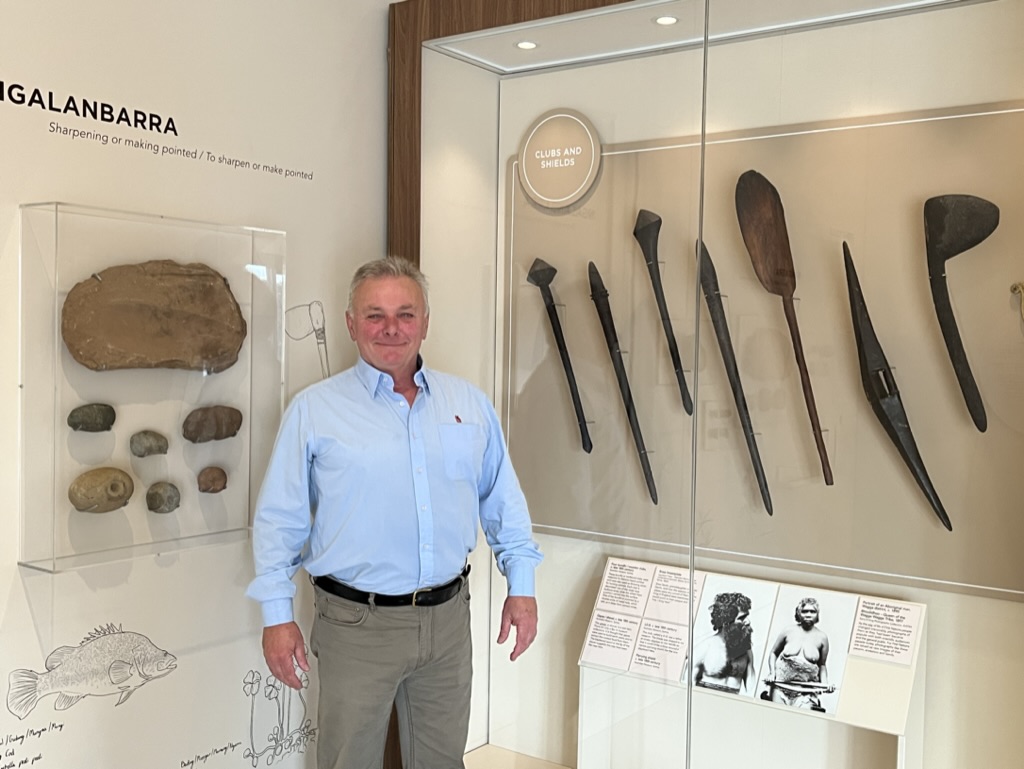
With the Museum of the Riverina redevelopment, museum manager Luke Grealy is most excited for visitors to see the new Wiradyuri display, which features seven wooden First Nations items. Photos: Jarryd Rowley.
After years of planning and redevelopment, the Museum of the Riverina has finally opened its doors to the public with a vast array of new historical pieces and exhibitions.
Since opening its doors last Tuesday (7 March), the museum has seen a steady influx of people coming to enjoy a range of collections across many exhibitions.
“There have been a lot of curious people come to visit the many new and different things that the museum has to offer,” said museum manager Luke Grealy.
“All visitors have had different interests. Some are interested in the local military side of things, while others are really invested in the rich sports history and really identify with the sporting champions that we have here in the Riverina.
“My favourite, because of their significance, are the seven wooden Indigenous Wiradyuri clubs that we have here on display. They were originally found at the Ganmain Station and collected by the Devlin family.”
The seven wooden tools had been kept at the Australian Museum for decades but were returned to Wagga Wagga after the Mawang Gaway Wiradyuri Gallery Reference Group realised their Wiradyuri origins.
“It was an Australian first for a national institution in the Australian Museum-returned objects to the Country, because they knew it was from Wiradyuri Country,” Mr Grealy said.
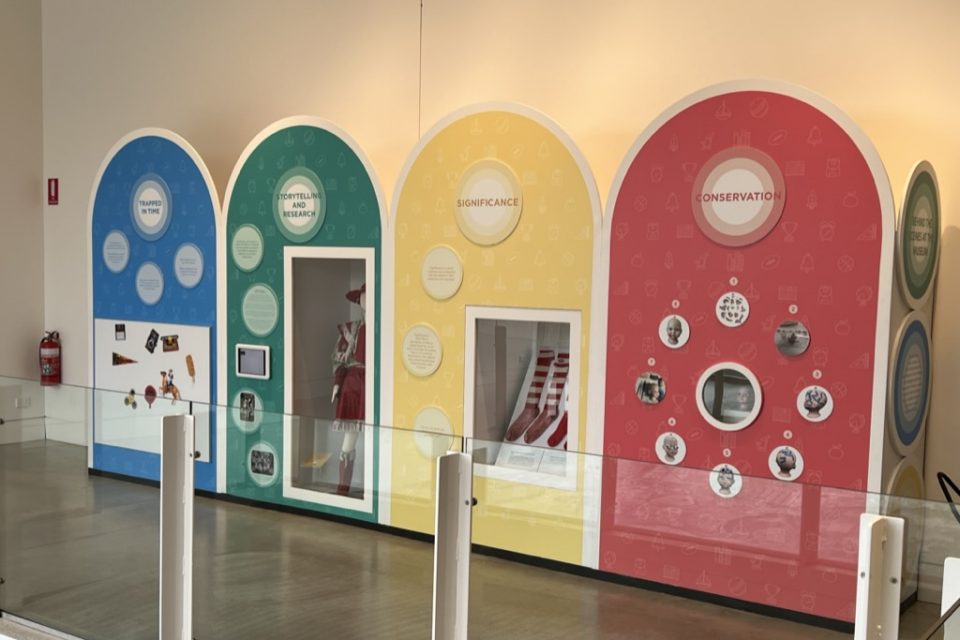
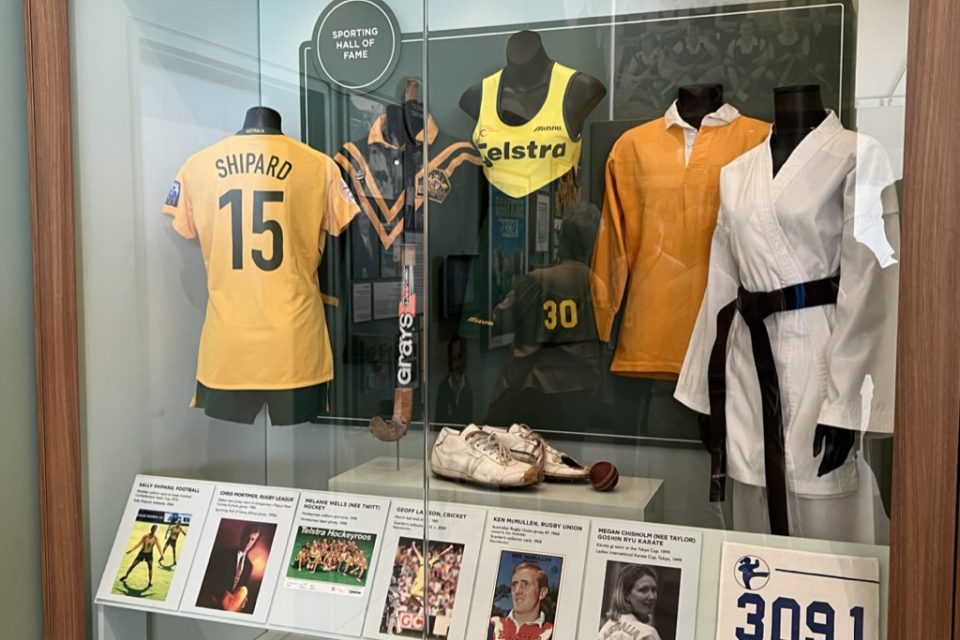
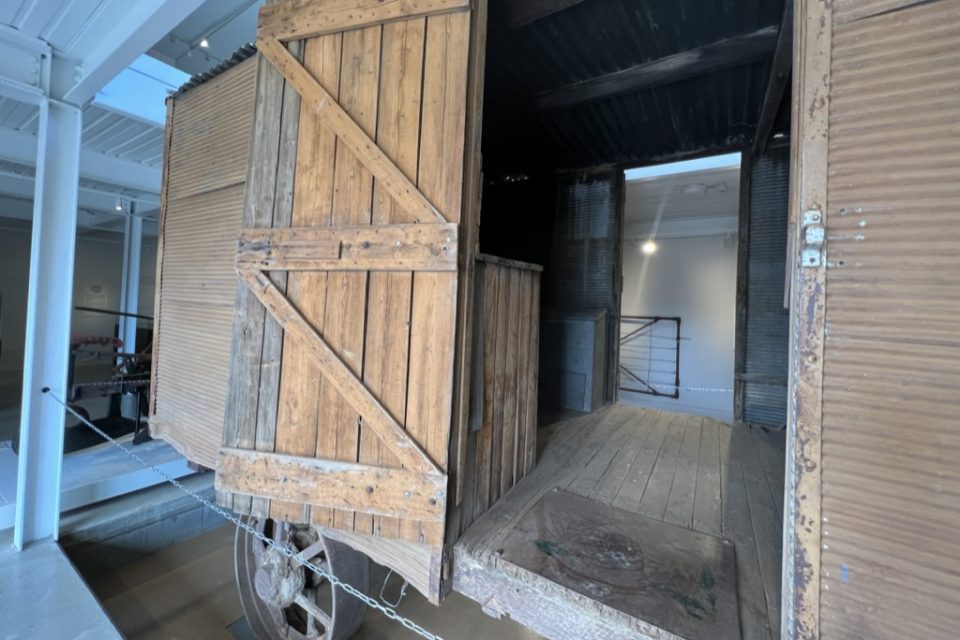
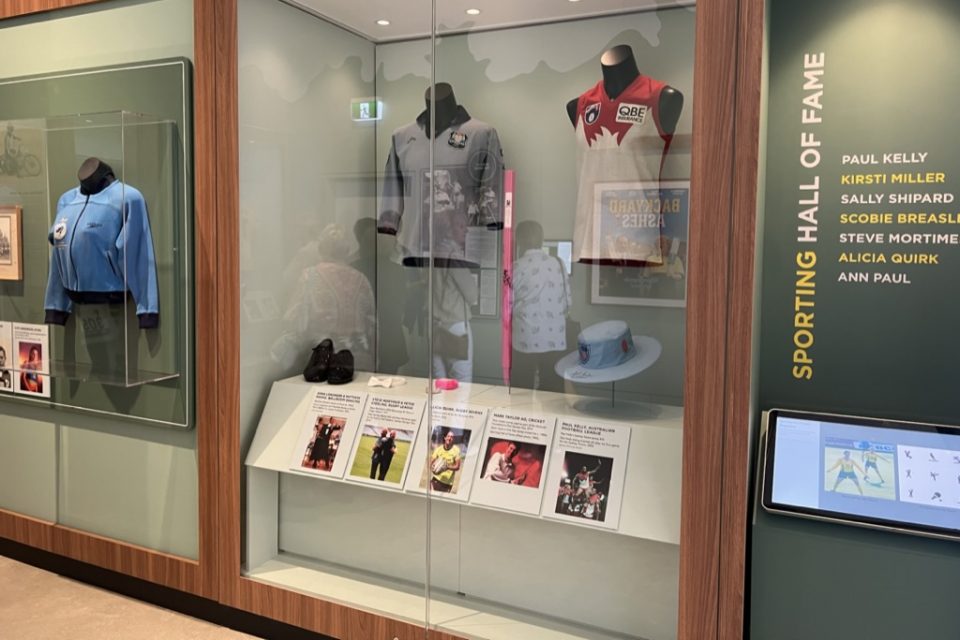
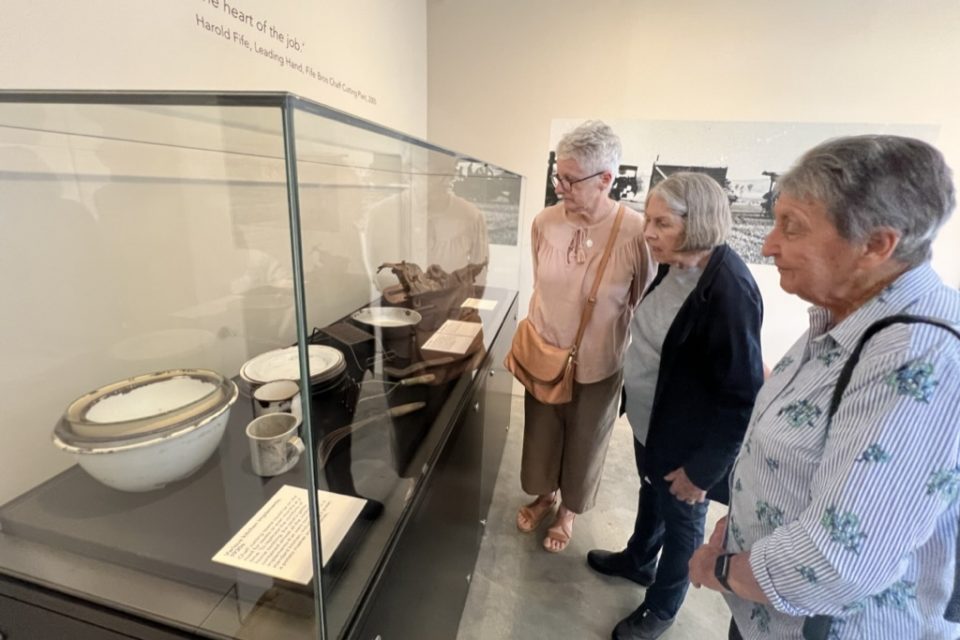
Mount Erin Heritage Centre member Mary Dwyer was one of a handful of people who were lucky enough to receive a private tour of the recently redeveloped museum.
Mrs Dwyer said the venue was a great space for people to truly appreciate the heritage of the Riverina.
“There is quite a lot of information and artefacts in relation to the First Nations people of the area, and that was something I quite enjoyed,” she said.
“It is a very interactive space with a lot of different topics for everyone to enjoy.”
Inside the museum is a recording of the 2004 Olympic 4 x 400-metre relay final, in which Patrick Dwyer, Mrs Dwyer’s son, helped secure a famous silver medal for Australia.
“That was quite a shock to see,” Mrs Dwyer said.
“Obviously, it is one of the proudest moments of both my and my son’s lives, so to have that on display for people to come and see and be inspired by is quite special.”
Mr Grealy said funding by both the State and Federal governments had allowed for the redevelopment to take place, and thanked the Wagga Wagga City Council for being a driving force behind the project.
“The Federal and State governments, along with the Wagga Wagga City Council, have all worked tirelessly for a number of years to put this all together and we at the Museum of the Riverina are extremely thankful,” he said.







